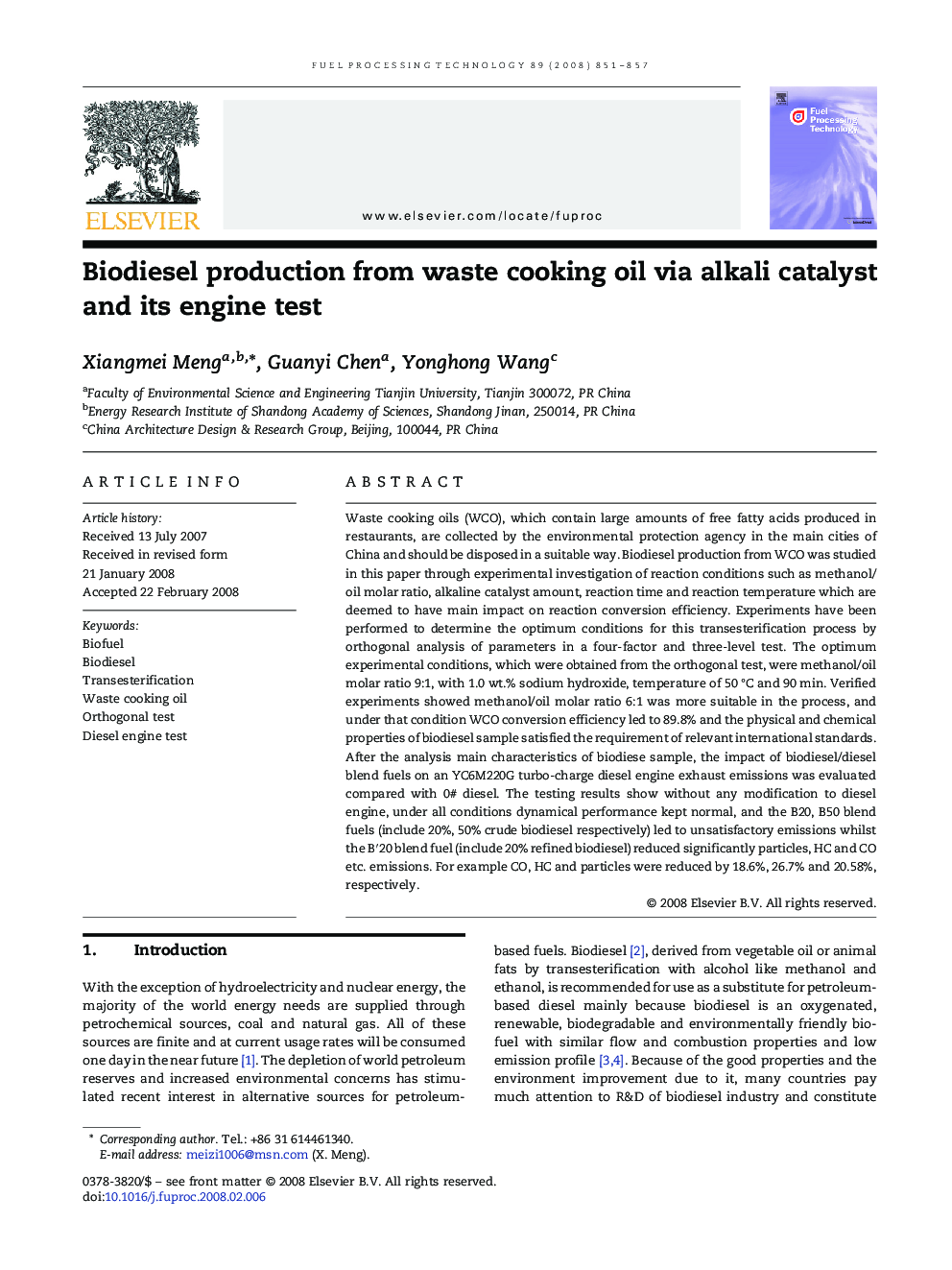| کد مقاله | کد نشریه | سال انتشار | مقاله انگلیسی | نسخه تمام متن |
|---|---|---|---|---|
| 211511 | 461771 | 2008 | 7 صفحه PDF | دانلود رایگان |

Waste cooking oils (WCO), which contain large amounts of free fatty acids produced in restaurants, are collected by the environmental protection agency in the main cities of China and should be disposed in a suitable way. Biodiesel production from WCO was studied in this paper through experimental investigation of reaction conditions such as methanol/oil molar ratio, alkaline catalyst amount, reaction time and reaction temperature which are deemed to have main impact on reaction conversion efficiency. Experiments have been performed to determine the optimum conditions for this transesterification process by orthogonal analysis of parameters in a four-factor and three-level test. The optimum experimental conditions, which were obtained from the orthogonal test, were methanol/oil molar ratio 9:1, with 1.0 wt.% sodium hydroxide, temperature of 50 °C and 90 min. Verified experiments showed methanol/oil molar ratio 6:1 was more suitable in the process, and under that condition WCO conversion efficiency led to 89.8% and the physical and chemical properties of biodiesel sample satisfied the requirement of relevant international standards. After the analysis main characteristics of biodiese sample, the impact of biodiesel/diesel blend fuels on an YC6M220G turbo-charge diesel engine exhaust emissions was evaluated compared with 0# diesel. The testing results show without any modification to diesel engine, under all conditions dynamical performance kept normal, and the B20, B50 blend fuels (include 20%, 50% crude biodiesel respectively) led to unsatisfactory emissions whilst the B′20 blend fuel (include 20% refined biodiesel) reduced significantly particles, HC and CO etc. emissions. For example CO, HC and particles were reduced by 18.6%, 26.7% and 20.58%, respectively.
Journal: Fuel Processing Technology - Volume 89, Issue 9, September 2008, Pages 851–857